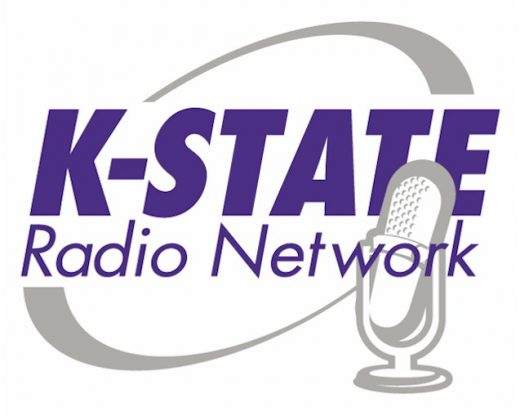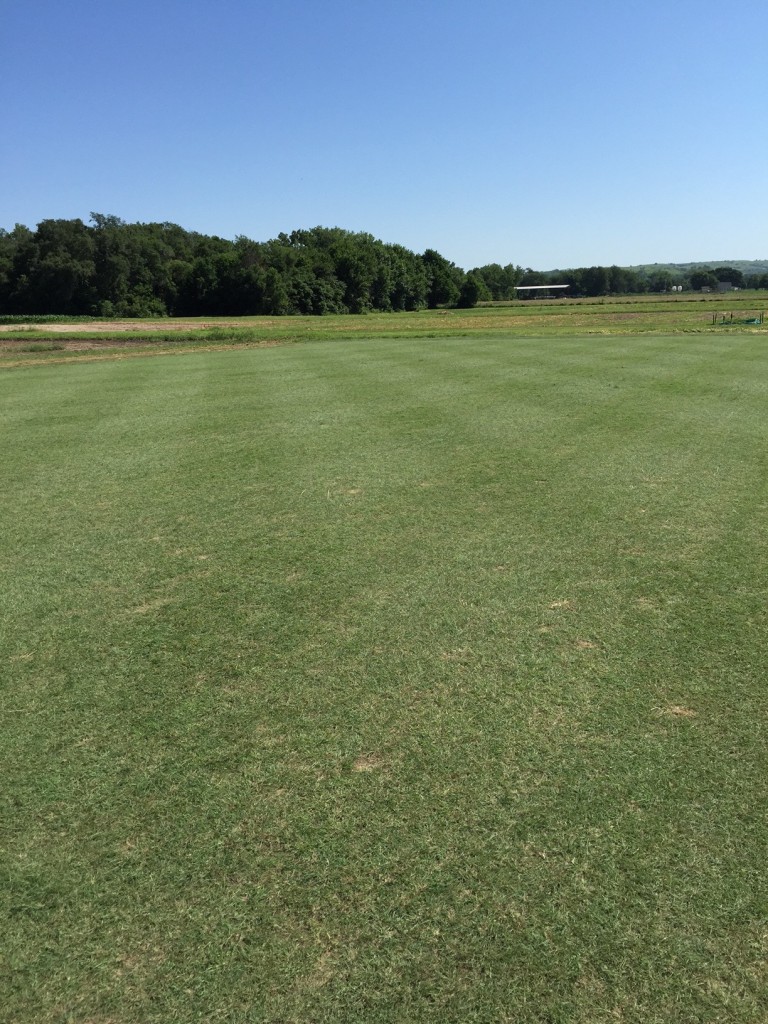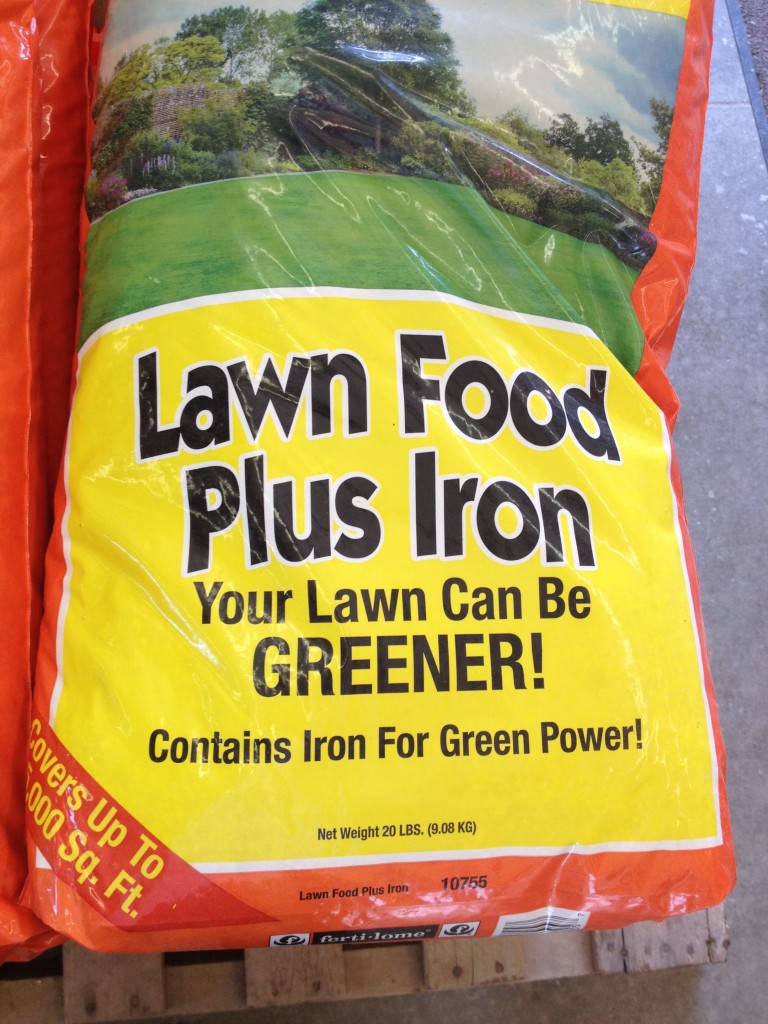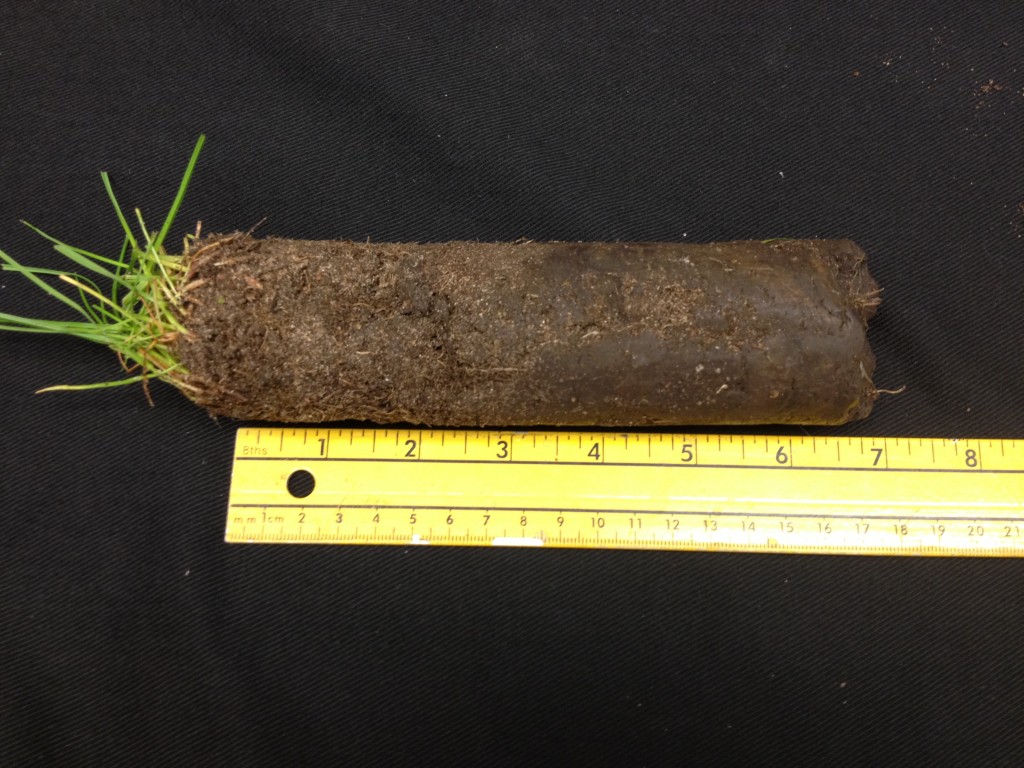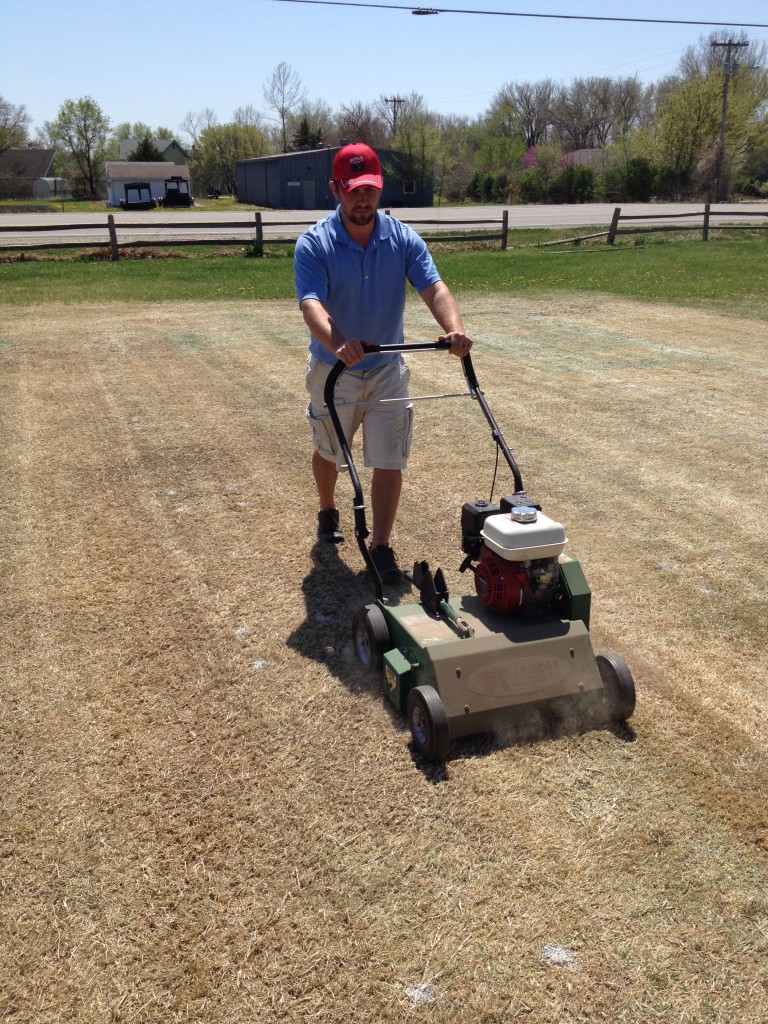Many Kansas landscapes include warm-season grasses, which require a little care in order to stay healthy during the hot summer months.
Hoyle says warm-season grasses may need fertilizer to remain healthy
MANHATTAN, Kan. – Kansas State University Associate Professor and Extension Turfgrass Specialist, Dr. Jared Hoyle says homeowners ought to be thinking about a mid-summer checkup on their lawns, which likely includes applying fertilizer and weed killer.
Many Kansas summer landscapes include warm-season grasses, namely bermudagrass, zoysiagrass and buffalograss. Each of those requires a little care in order to stay healthy through the hot weeks ahead.
“Those three grasses are not all created equal and some grow faster than others, which means we need to feed them a little bit different,” said Hoyle, an associate professor in the Department of Horticulture and Natural Resources.
For bermudagrass and zoysiagrass, Hoyle suggests applying a total of 1-3 pounds of nitrogen per 1000 square feet during a typical growing season, which is the beginning of May through the middle of August.
“You can split that up into multiple applications of a quick release fertilizer, or you could do fewer applications of a slower release,” he said. “But the main goal is 1-3 pounds of nitrogen per 1000 square feet regardless of what number or percentage product you’re using.”
Buffalograss does not require as much nitrogen. Studies at Kansas State University indicate that “about 1 pound of nitrogen per year for 1000 square feet is good,” according to Hoyle.
“It’s hard to split up a pound over multiple applications, so that’s one where you might want to look at a slow release to put that pound of nitrogen per 1000 square feet throughout the year,” he said. “You can do that right now and that will get you through the rest of the year with a slow release fertilizer.”
In addition to fertilizing warm-season grasses, Hoyle said homeowners should be looking at ways to control thatch and weeds in the lawn.
“We really like to preach that if you are going to do something with the lawn — whether it is fertilizing or watering — do it when it’s actively growing,” Hoyle said. “Right now, with warm-season grasses, if you have a thatch problem, you can tear that area up (with a verti-cutter or slicer), fertilize the lawn, and it will grow right back in. If you try to do that during the fall or spring months, there will be periods of time when the lawn isn’t growing, or delayed growth, and it could lead to more problems.”
Among weeds, crabgrass and yellow nutsedge are two of the most troublesome this time of year.
““I’m seeing a lot of crabgrass and yellow nutsedge and I blame it on the weather,” Hoyle said. “Yellow nutsedge loves flooded, compacted soils and because of periodic flooding around the state, I have seen a lot of areas that typically never have yellow nutsedge. It’s a weed to keep an eye out with the weather conditions as they have been.”
To control yellow nutsedge, look for products with the active ingredients halosulfuron or sulfrentrazone, he said.
Crabgrass that has already emerged can be treated with products that include the active ingredient quinclorac.
Hoyle noted that homeowners should be patient when applying herbicides to yellow nutsedge and crabgrass; it might take more than one application to control those weeds.
K-State’s Department of Horticulture and Natural Resources publishes a weekly horticulture newsletter with updated information on lawn care and other turfgrass issues. Residents may also contact their local extension agent.

